Corsair HX1200 PSU Review
Why you can trust Tom's Hardware
Transient Response Tests
Advanced Transient Response Tests
For details on our transient response testing, please click here.
Ιn these tests, we monitor the HX1200's response in several scenarios. First, a transient load (10A at +12V, 5A at 5V, 5A at 3.3V, and 0.5A at 5VSB) is applied for 200ms as the PSU works at 20 percent load. In the second scenario, it's hit by the same transient load while operating at 50 percent load.
In the next sets of tests, we increase the transient load on the major rails with a new configuration: 15A at +12V, 6A at 5V, 6A at 3.3V, and 0.5A at 5VSB. We also increase the load-changing repetition rate from 5 Hz (200ms) to 50 Hz (20ms). Again, this runs with the PSU operating at 20 and 50 percent load.
The last tests are even tougher. Although we keep the same loads, the load-changing repetition rate rises to 1 kHz (1ms).
In all of the tests, we use an oscilloscope to measure the voltage drops caused by the transient load. The voltages should remain within the ATX specification's regulation limits.
These tests are crucial because they simulate the transient loads a PSU is likely to handle (such as booting a RAID array or an instant 100 percent load of CPU/GPUs). We call these "Advanced Transient Response Tests," and they are designed to be very tough to master, especially for a PSU with a capacity of less than 500W.
Advanced Transient Response at 20 Percent – 200ms
| Voltage | Before | After | Change | Pass/Fail |
|---|---|---|---|---|
| 12V | 12.149V | 12.092V | 0.47% | Pass |
| 5V | 5.029V | 4.929V | 1.99% | Pass |
| 3.3V | 3.317V | 3.233V | 2.53% | Pass |
| 5VSB | 5.011V | 4.981V | 0.60% | Pass |
Advanced Transient Response at 20 Percent – 20ms
| Voltage | Before | After | Change | Pass/Fail |
|---|---|---|---|---|
| 12V | 12.149V | 12.076V | 0.60% | Pass |
| 5V | 5.028V | 4.913V | 2.29% | Pass |
| 3.3V | 3.316V | 3.212V | 3.14% | Pass |
| 5VSB | 5.011V | 4.972V | 0.78% | Pass |
Advanced Transient Response at 20 Percent – 1ms
| Voltage | Before | After | Change | Pass/Fail |
|---|---|---|---|---|
| 12V | 12.150V | 12.070V | 0.66% | Pass |
| 5V | 5.029V | 4.932V | 1.93% | Pass |
| 3.3V | 3.317V | 3.211V | 3.20% | Pass |
| 5VSB | 5.012V | 4.968V | 0.88% | Pass |
Advanced Transient Response at 50 Percent – 200ms
| Voltage | Before | After | Change | Pass/Fail |
|---|---|---|---|---|
| 12V | 12.103V | 12.036V | 0.55% | Pass |
| 5V | 5.014V | 4.922V | 1.83% | Pass |
| 3.3V | 3.308V | 3.225V | 2.51% | Pass |
| 5VSB | 4.989V | 4.959V | 0.60% | Pass |
Advanced Transient Response at 50 Percent – 20ms
| Voltage | Before | After | Change | Pass/Fail |
|---|---|---|---|---|
| 12V | 12.103V | 12.025V | 0.64% | Pass |
| 5V | 5.013V | 4.905V | 2.15% | Pass |
| 3.3V | 3.308V | 3.203V | 3.17% | Pass |
| 5VSB | 4.989V | 4.953V | 0.72% | Pass |
Advanced Transient Response at 50 Percent – 1ms
| Voltage | Before | After | Change | Pass/Fail |
|---|---|---|---|---|
| 12V | 12.104V | 12.018V | 0.71% | Pass |
| 5V | 5.016V | 4.904V | 2.23% | Pass |
| 3.3V | 3.309V | 3.208V | 3.05% | Pass |
| 5VSB | 4.991V | 4.943V | 0.96% | Pass |
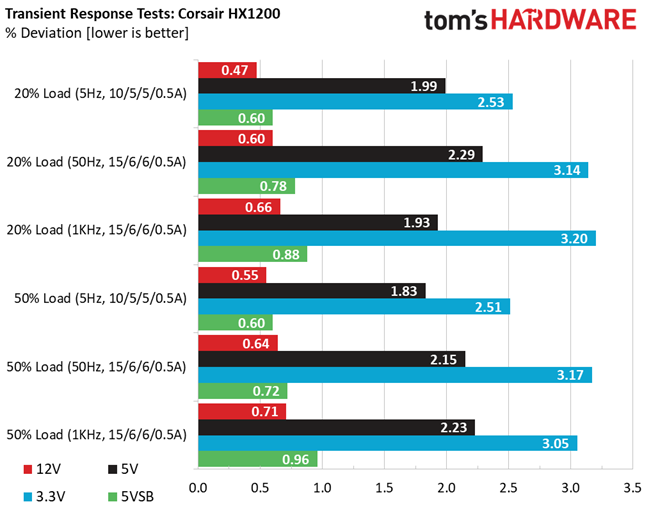

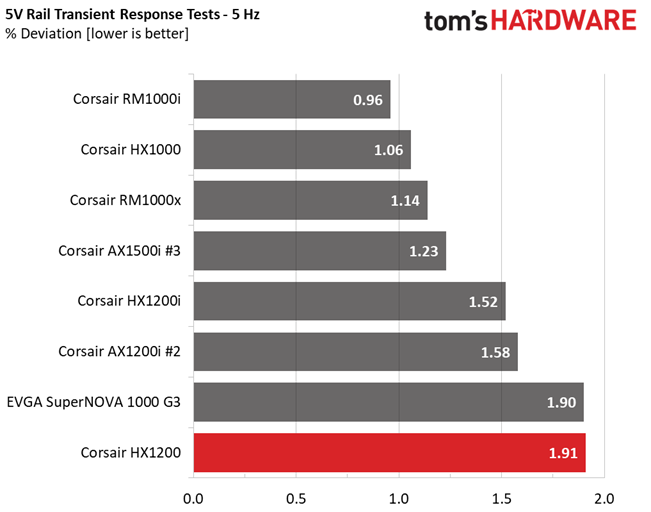
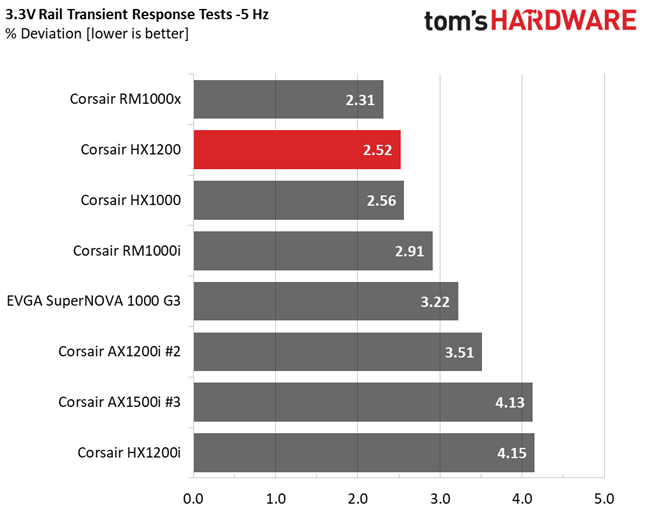

While the transient performance of Corsair's +12V rail is great, the 5V rail doesn't fare as well. Meanwhile, the 3.3V and 5VSB rails do pretty well overall.
Get Tom's Hardware's best news and in-depth reviews, straight to your inbox.
Here are the oscilloscope screenshots we took during Advanced Transient Response Testing:
Transient Response At 20 Percent Load – 200ms
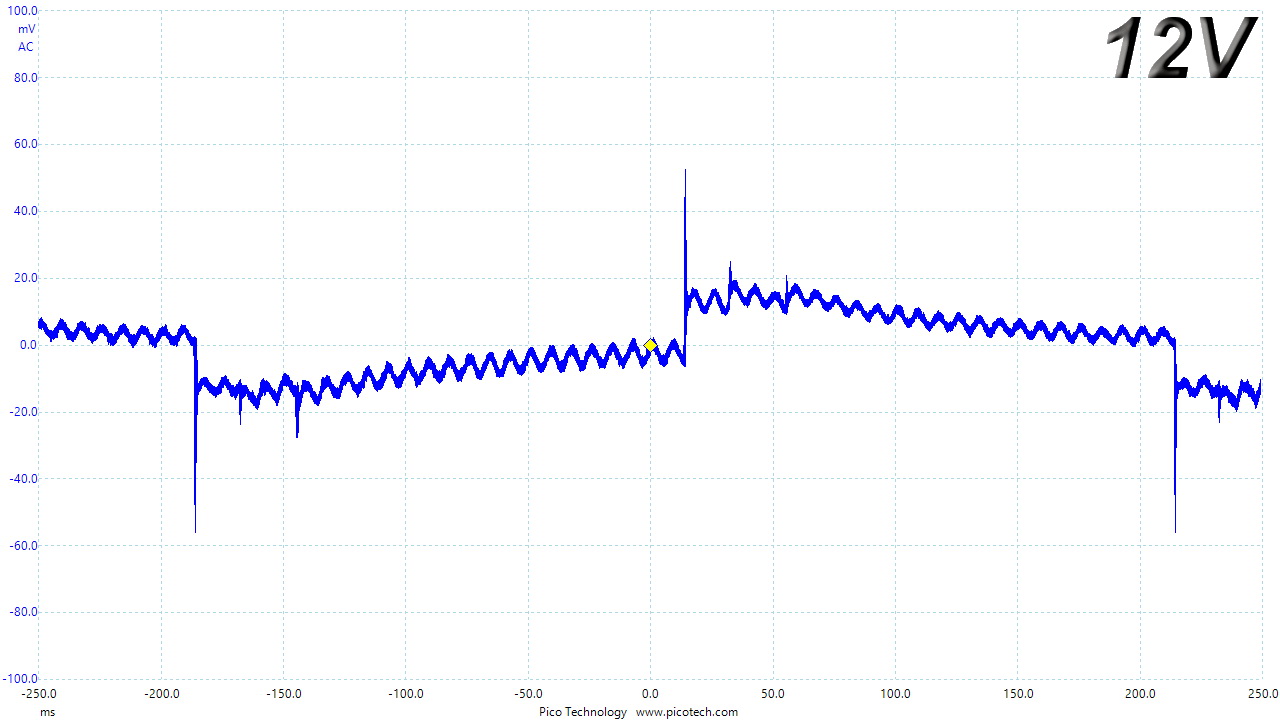

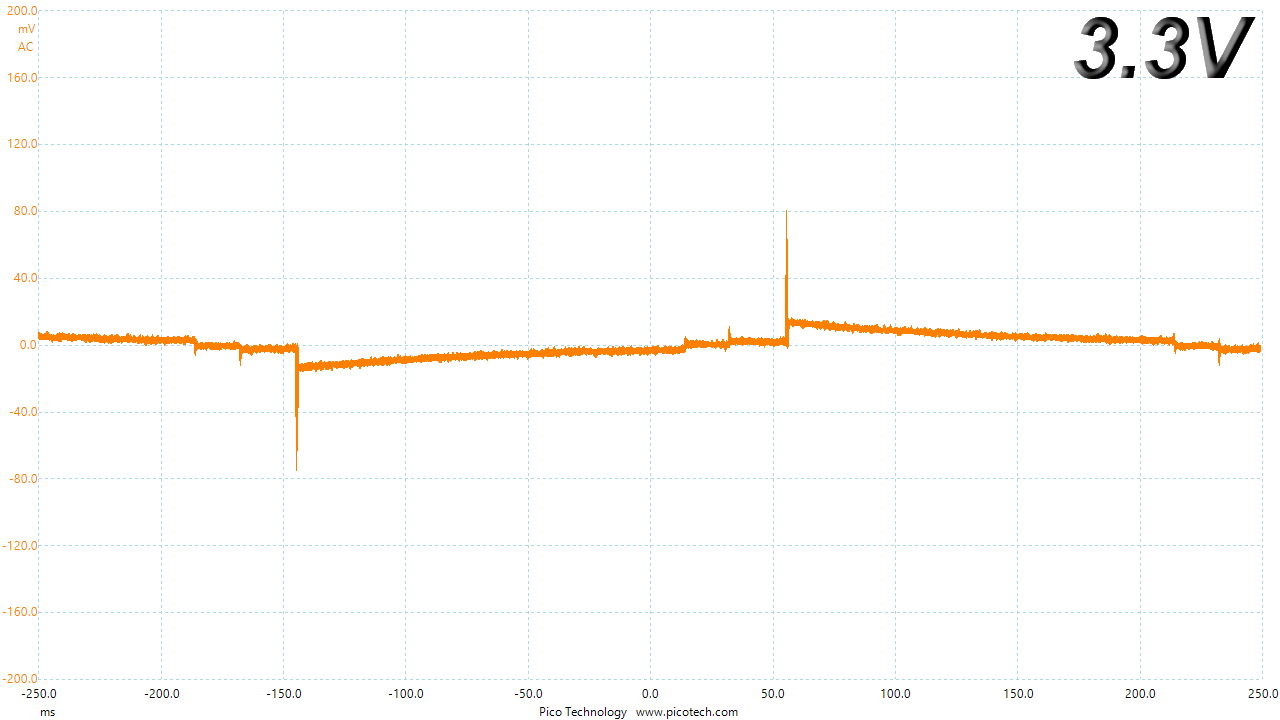
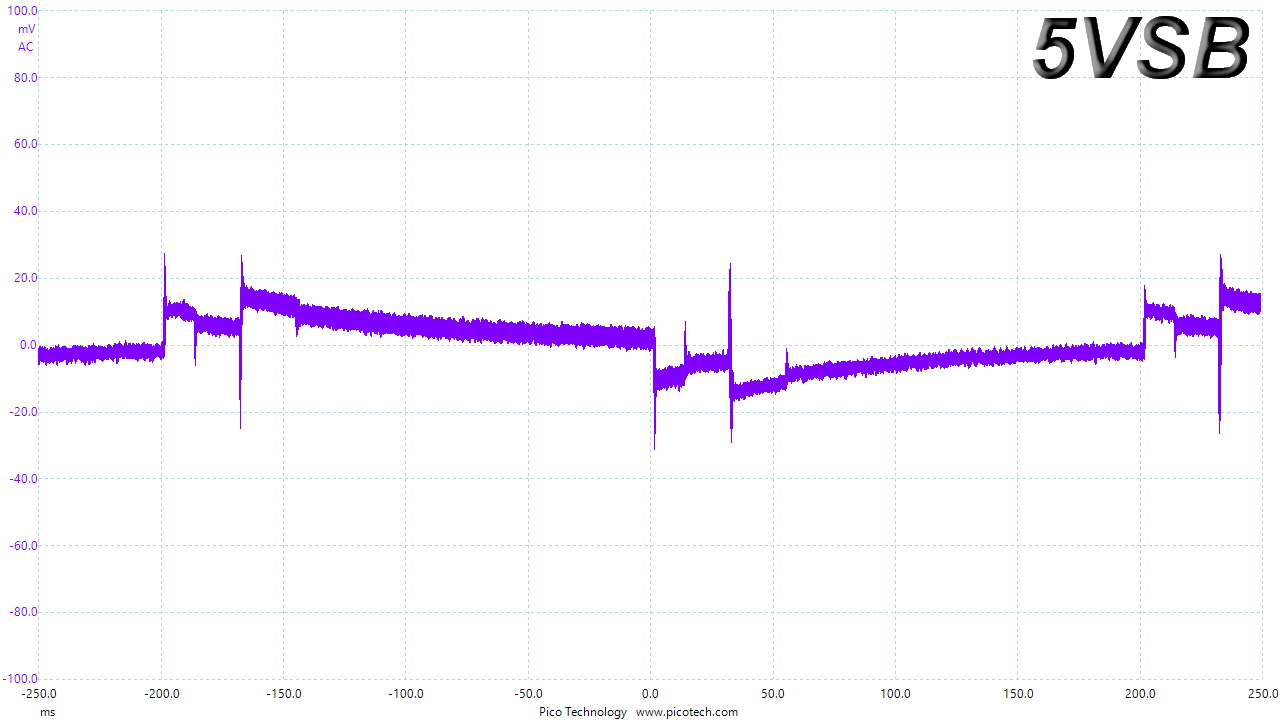
Transient Response At 20 Percent Load – 20ms




Transient Response At 20 Percent Load – 1ms
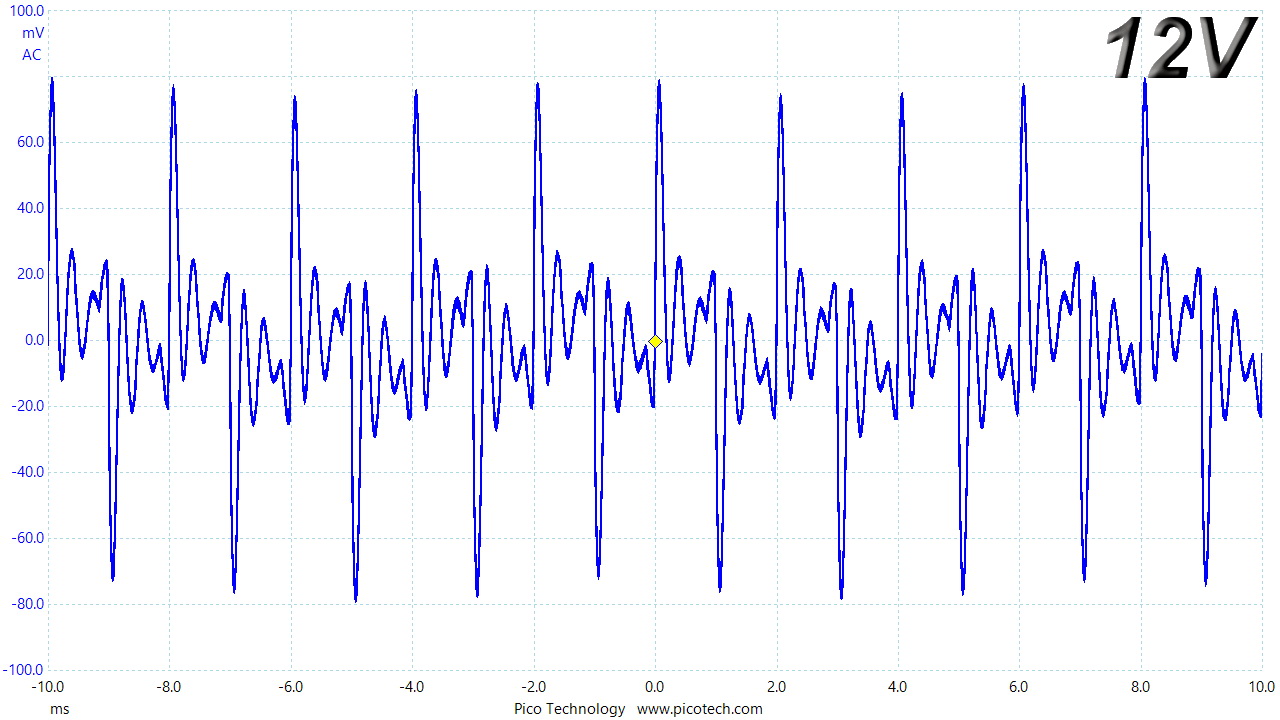
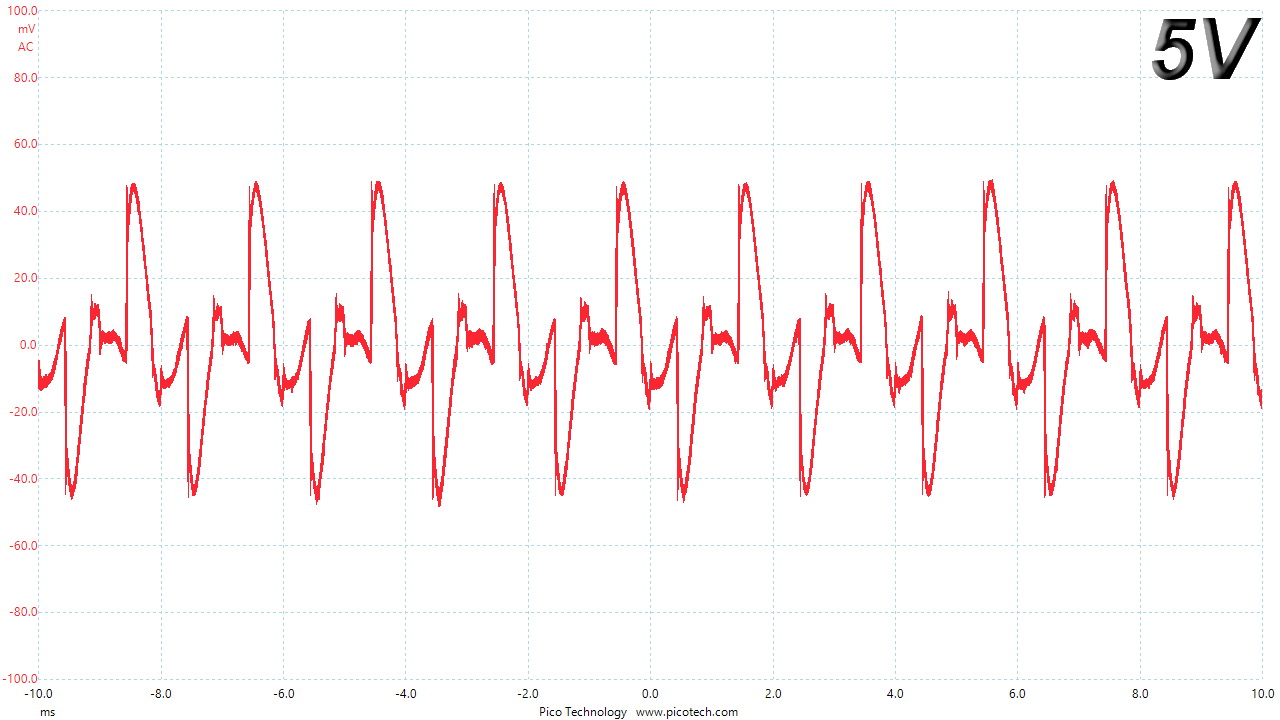

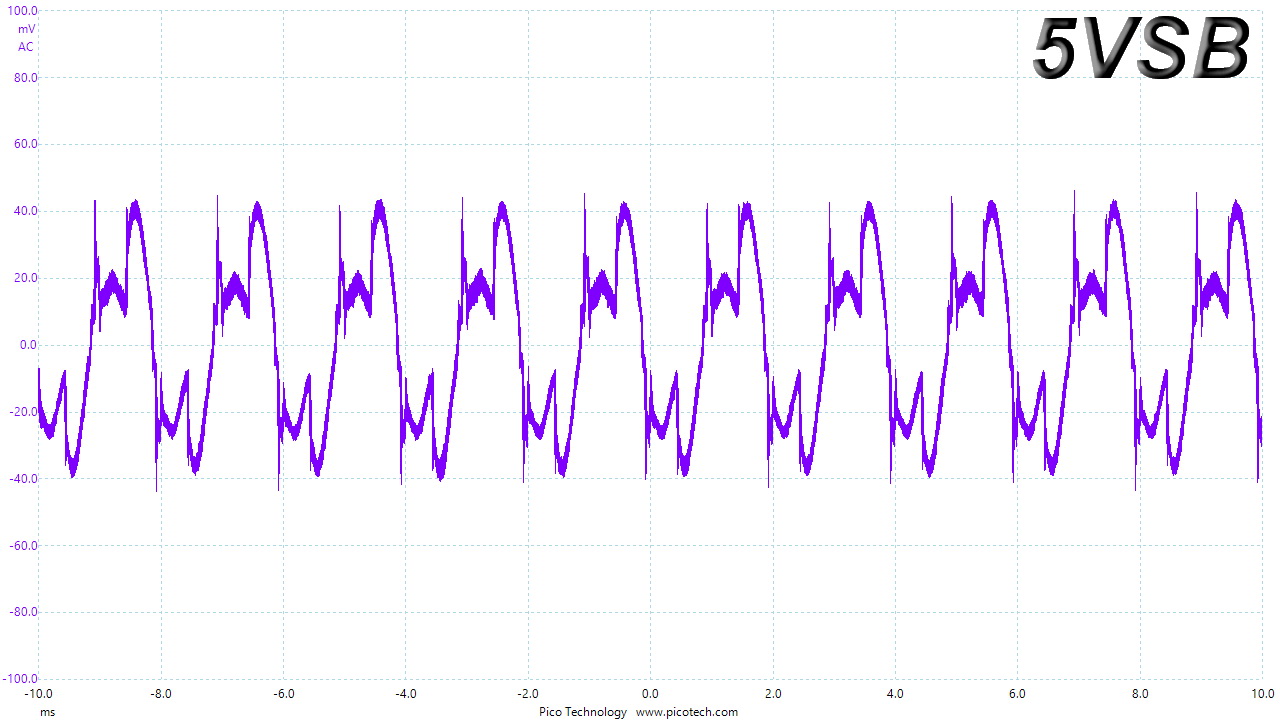
Transient Response At 50 Percent Load – 200ms
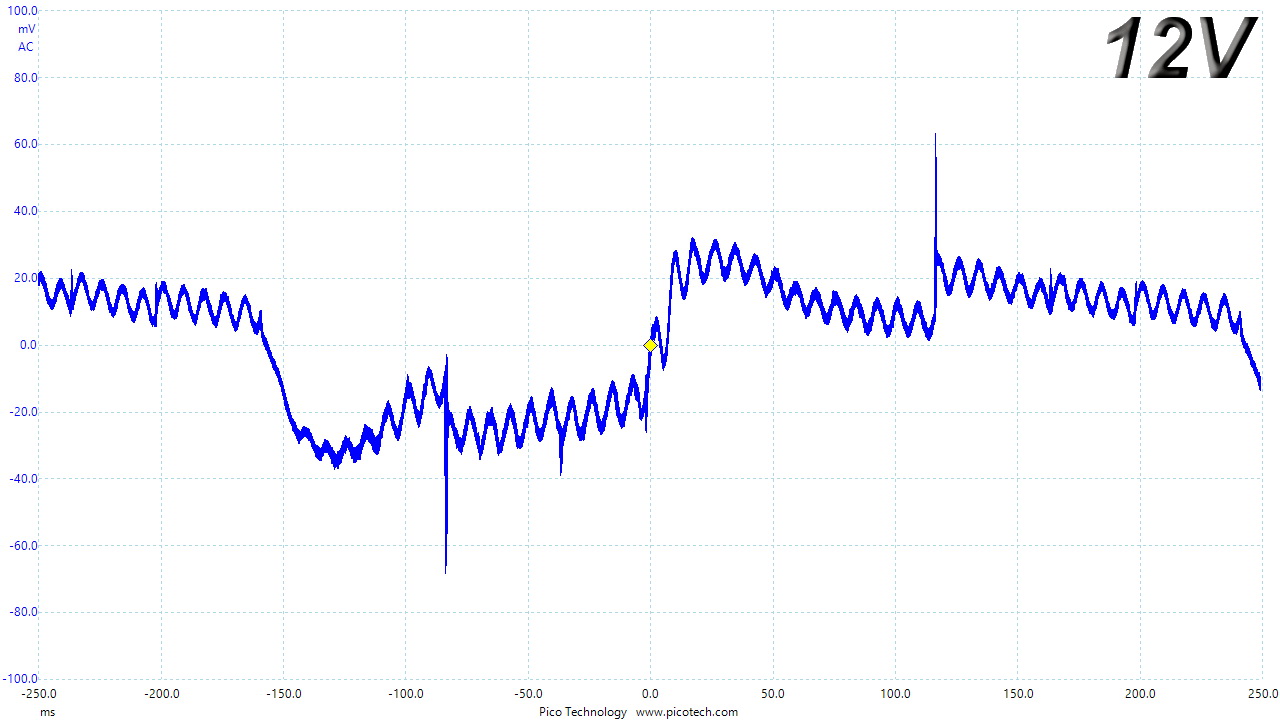
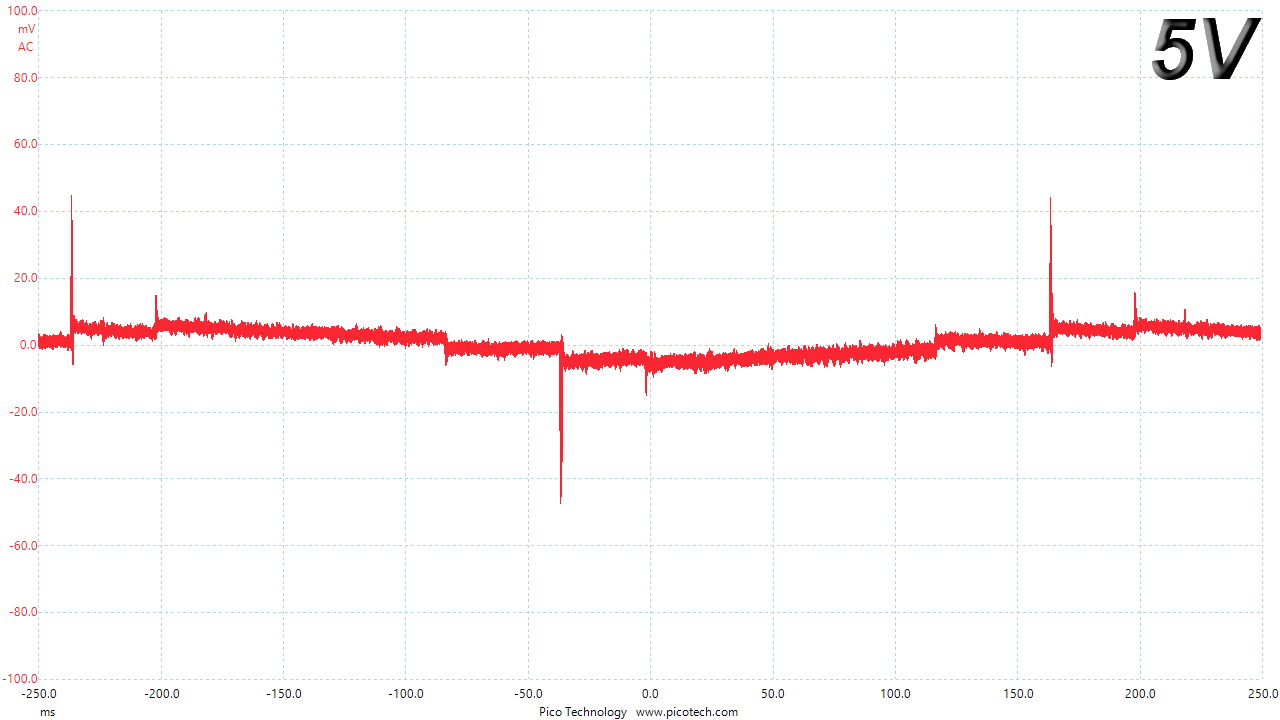
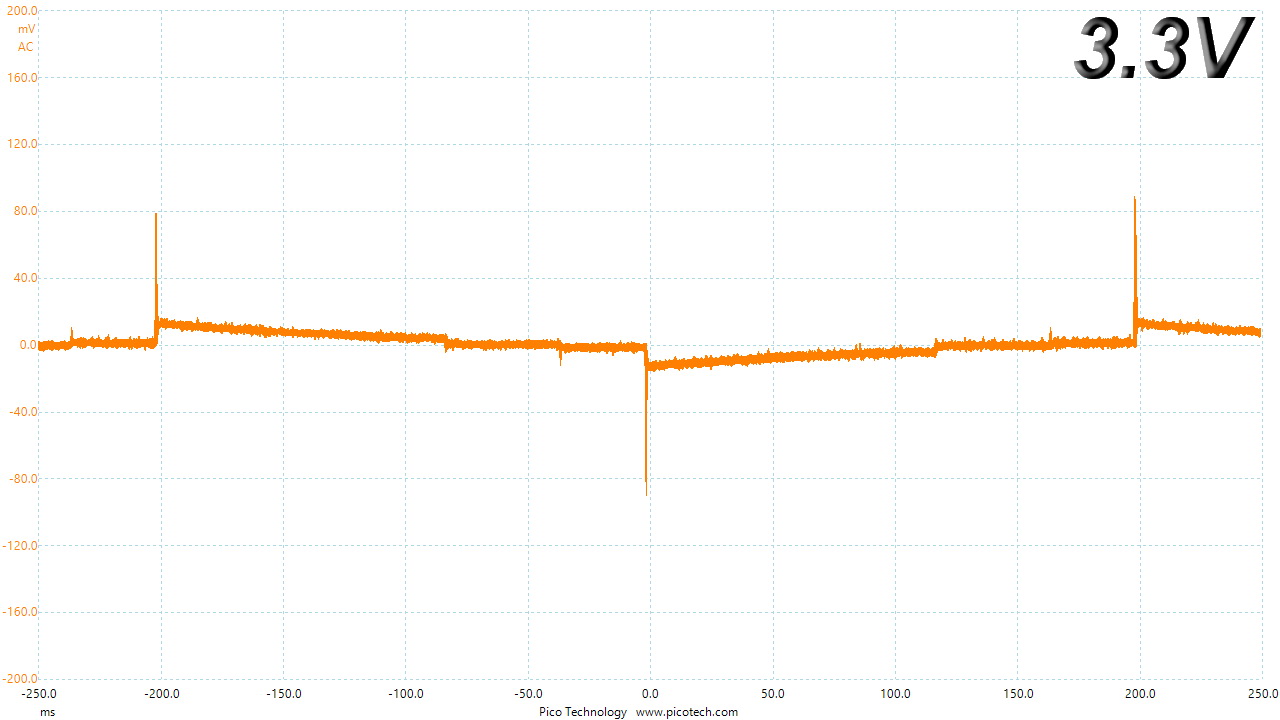
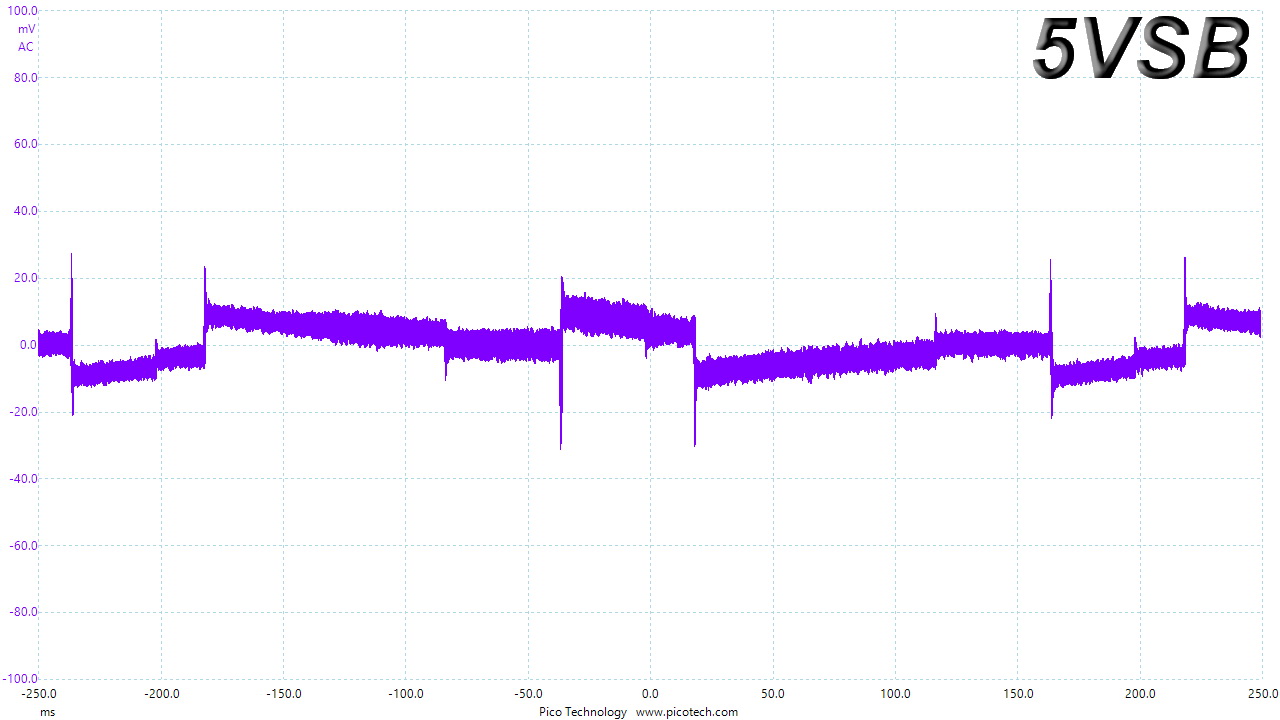
Transient Response At 50 Percent Load – 20ms
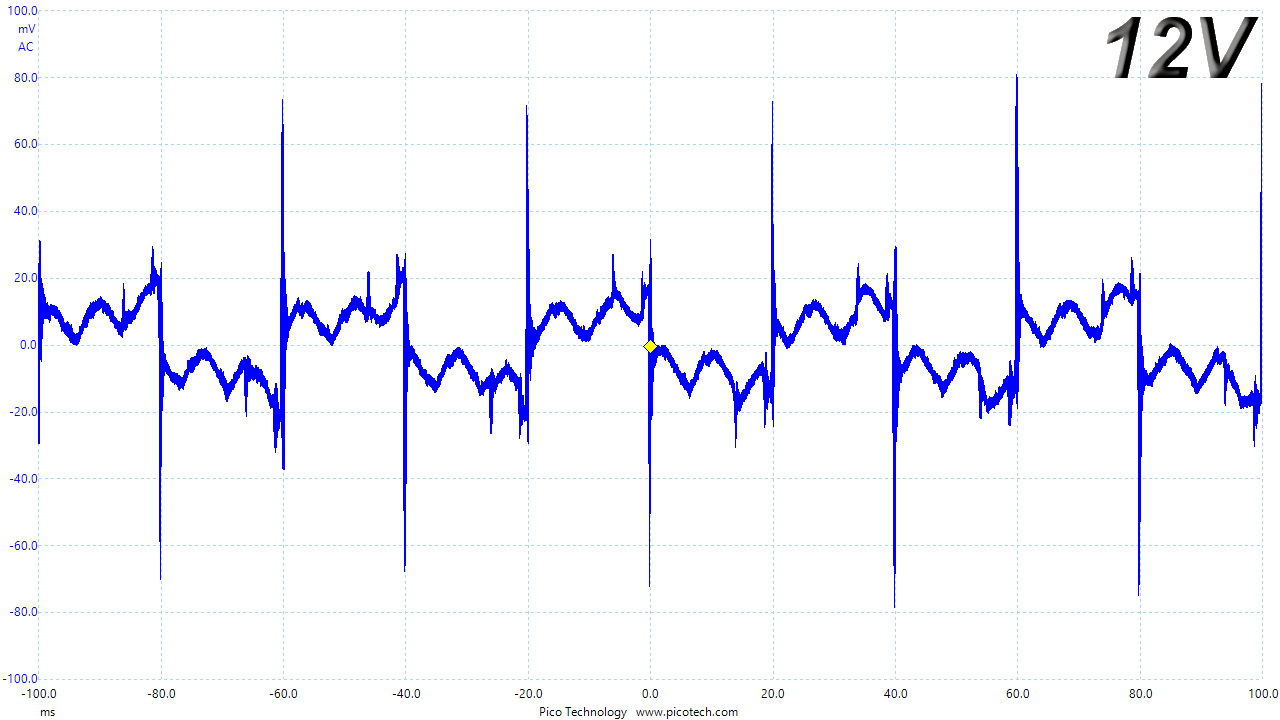


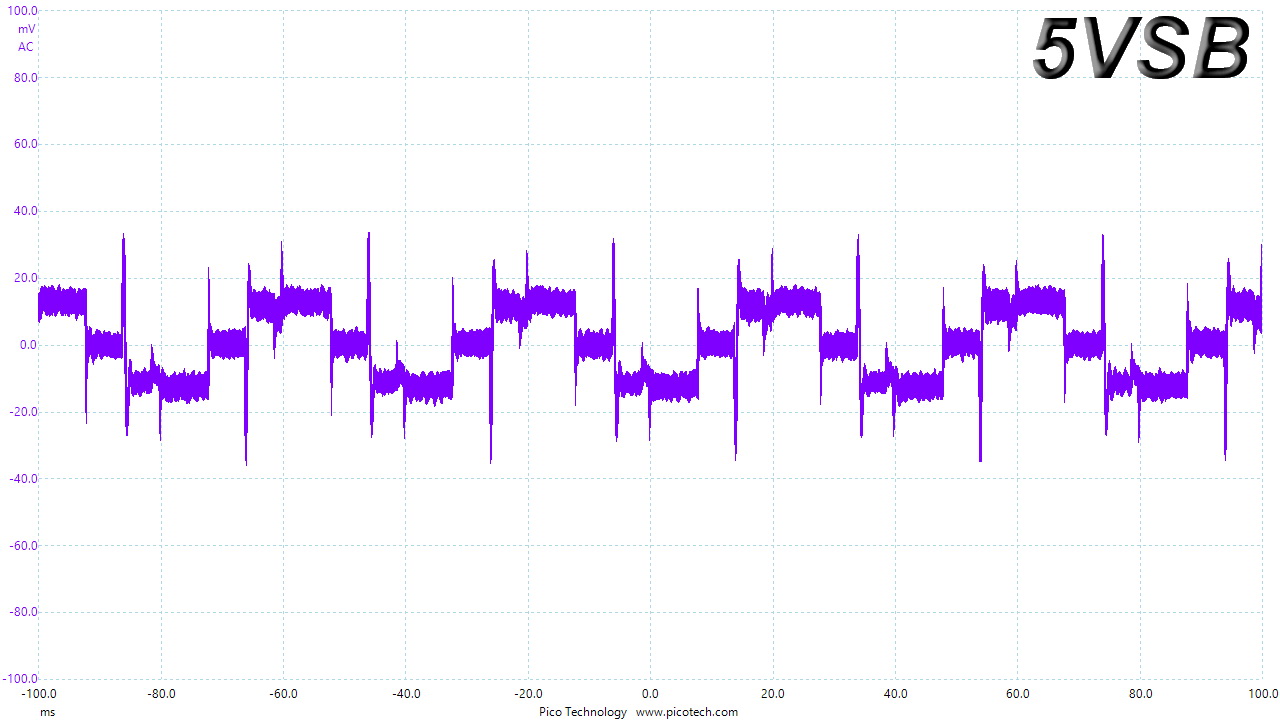
Transient Response At 50 Percent Load – 1ms

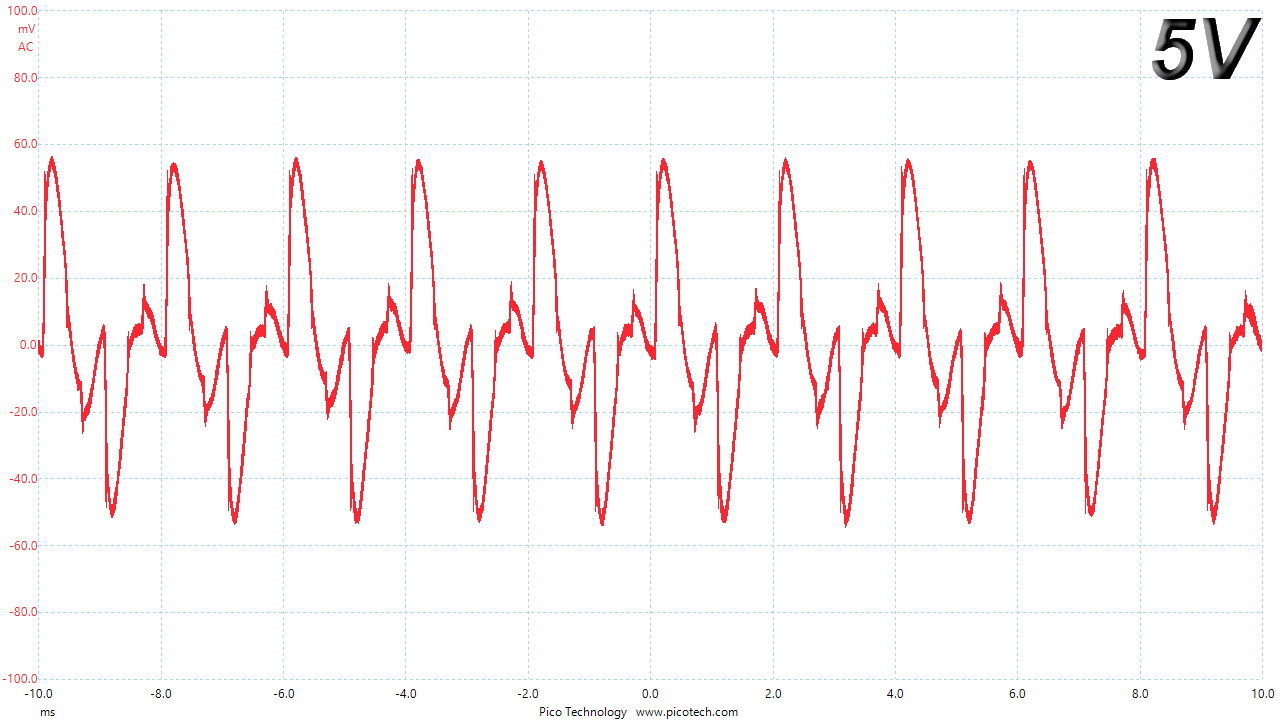

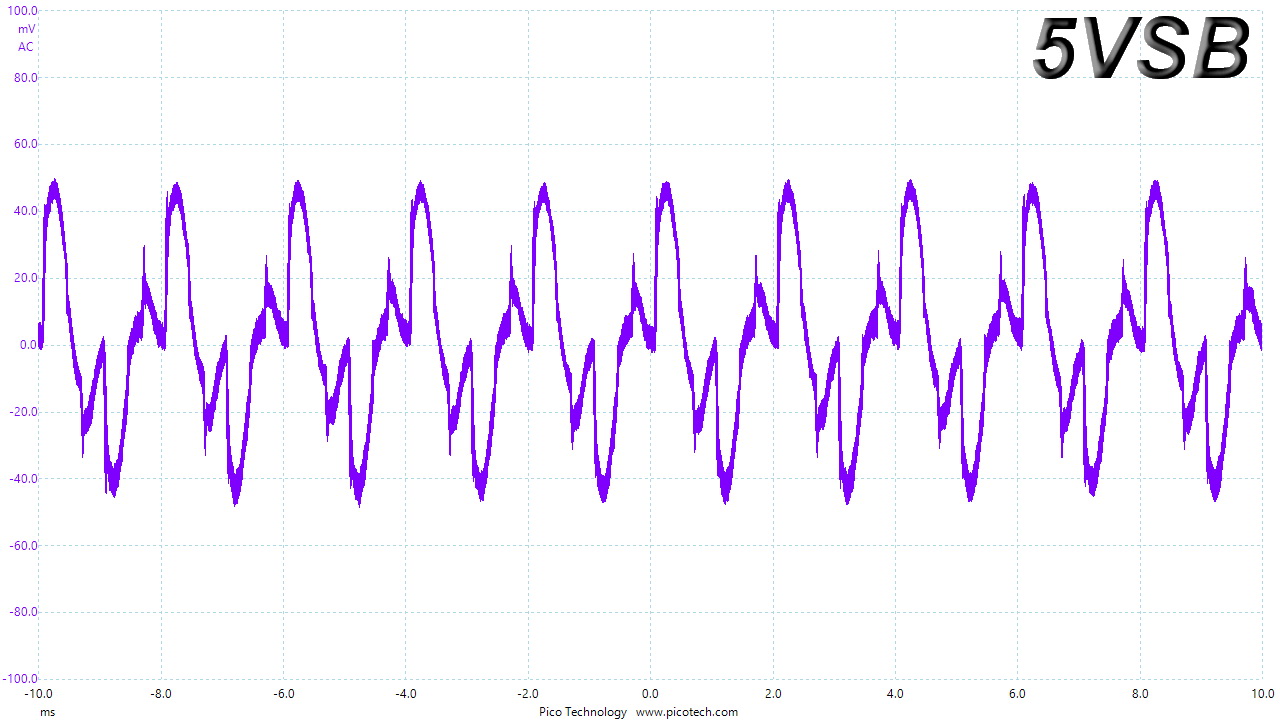
Turn-On Transient Tests
In the next set of tests, we measured the HX1200's response in simpler transient load scenarios—during its power-on phase.
For the first measurement, we turned the HX1200 off, dialed in the maximum current the 5VSB rail could output, and switched the PSU back on. In the second test, we dialed the maximum load the +12V rail could handle and started the 1200W supply while it was in standby mode. In the last test, while the PSU was completely switched off (we cut off the power or switched off the PSU by flipping its on/off switch), we dialed the maximum load the +12V rail could handle before switching it back on from the loader and restoring power. The ATX specification states that recorded spikes on all rails should not exceed 10 percent of their nominal values (+10 percent for 12V is 13.2V, and 5.5 V for 5V).

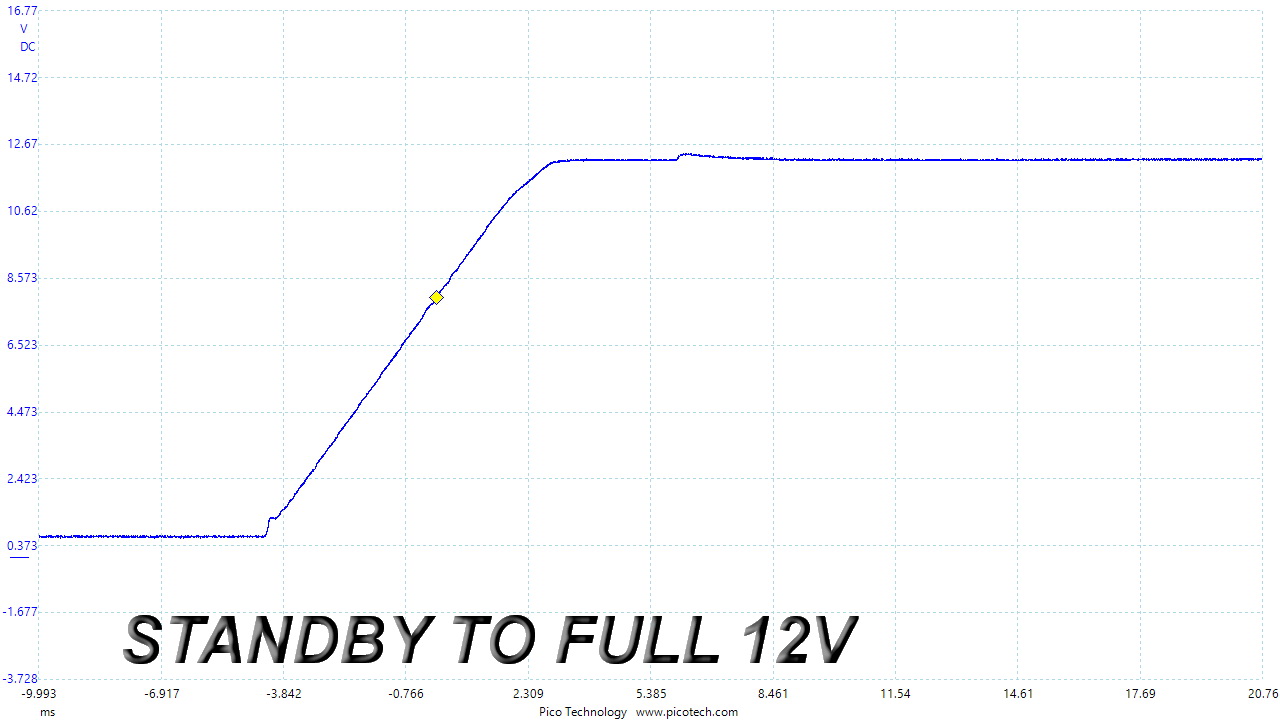
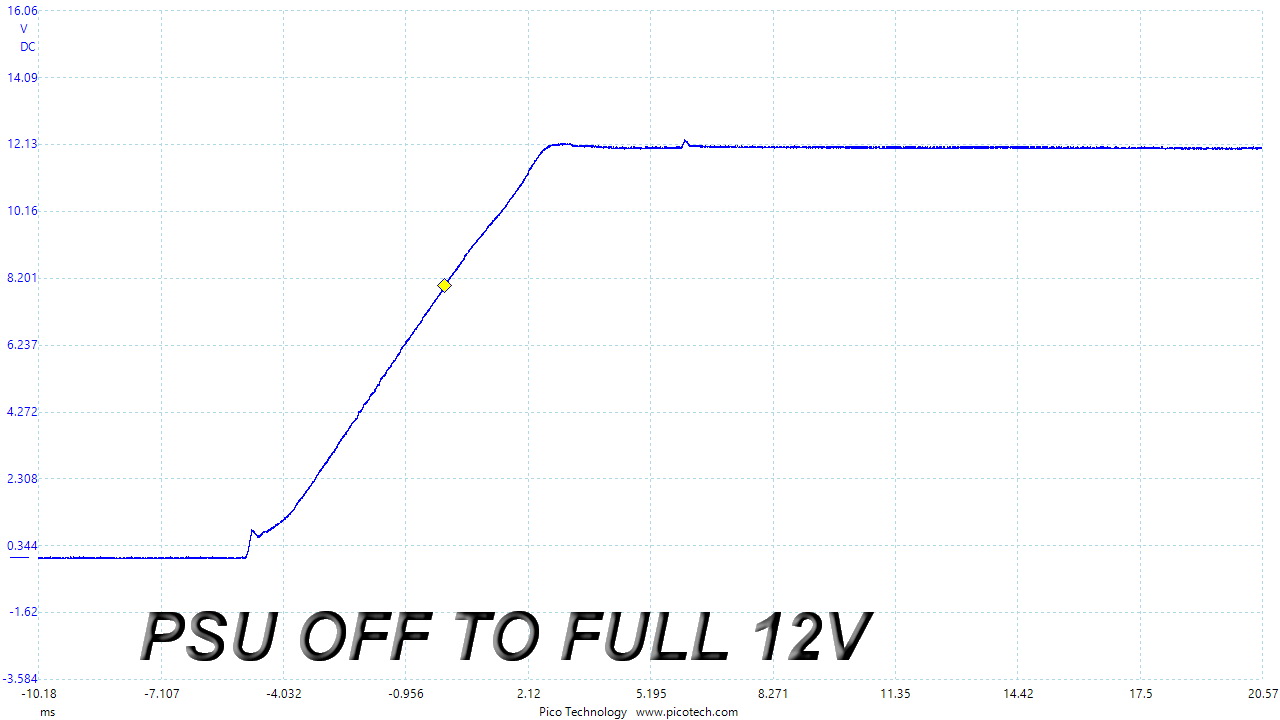
Only the last test isn't perfect, since we notice a small step in the waveform along with a tiny spike. All in all, the performance we measure is pretty good.
MORE: Best Power Supplies
MORE: How We Test Power Supplies
MORE: All Power Supply Content
Current page: Transient Response Tests
Prev Page Cross-Load Tests & Infrared Images Next Page Ripple Measurements
Aris Mpitziopoulos is a contributing editor at Tom's Hardware, covering PSUs.
-
davidgirgis In the Conclusion, 'TO' should be 'To'; and 'demands' should be 'depends'; and 'product' should be 'protect'.Reply -
grozzie Not another plug/connector change!. I, like many people on this site, build custom PC's, part of which includes sleeved cables. One bug bear is 2 wires into 1, which is a in in the arse. I personally like the HXi series of Corsair PSU's which only have one such connection. I also think the 24 pin ATX supply is outdated and needs revision. I can't see the point of supplying motherboards with 3.3 and 5v rails. If only 12v was supplied with any or all voltage reduction made on board life would be so much simpler and neater. By providing more noise reduction at source (the PSU) gives Motherboard manufacturers an open cart to reduce the quality of voltage regulation i.e capacitor quality, on the motherboard. Is there really a need for another PSU on the market?Reply -
panathas On the specifications table it says: "Efficiency: 80 PLUS Gold, ETA-B", which is wrong since this is a Platinum PSU.Reply -
10tacle ^^What are you talking about? Register and get on Corsair's support forums:Reply
https://sso.corsair.com/idp/AuthnEngine#/authn
Of course they have a customer support phone number: 888-222-4346 (North America customers).
Anyway, back on topic, first the $#@! miners have negatively impacted our GPU market, and now they may negatively impact our PSU market. :fou: What makes this really aggravating is that the PSU makers really can't prove a PSU was used 7x24 for heavy mining operation.
Worse, even if PSU vendors like Corsair offer a mining-specific PSU for less money with just say a 2-3 year warranty, nothing would stop the miners from buying the full 10-year variant. This mining craze is becoming a real pain to we PC enthusiasts. -
10tacle You are making everyone's head hurt. If you want to complain about Corsair, then do so on Corsair's customer support forums and social media. Also, just FYI, Tom's only reviews what is sent to them. They do not go "cherry pick" buy products and review them. For someone who is an alleged "original reader" of Tom's I'd have expected you to understand that.Reply -
jonnyguru Reply20057343 said:Not another plug/connector change!. I, like many people on this site, build custom PC's, part of which includes sleeved cables. One bug bear is 2 wires into 1, which is a in in the arse. I personally like the HXi series of Corsair PSU's which only have one such connection. I also think the 24 pin ATX supply is outdated and needs revision. I can't see the point of supplying motherboards with 3.3 and 5v rails. If only 12v was supplied with any or all voltage reduction made on board life would be so much simpler and neater. By providing more noise reduction at source (the PSU) gives Motherboard manufacturers an open cart to reduce the quality of voltage regulation i.e capacitor quality, on the motherboard. Is there really a need for another PSU on the market?
Bro.. You're all over the place. :D
So only the 24-pin is pin incompatible with the Type 3 cables. And yes... it's because of the extra sense wires. If you're really going to get all wound up about having to do 2-to-1 wires when doing custom cables, you know what you should do? Don't do 2-to-1 wires. They're only sense wires. The lack of them doesn't prevent the PSU from working. It'll just make your voltage regulation "as bad" as any other PSU that doesn't have the sense wires.
Yes. The ATX spec is out of date. But Intel wrote it and nobody is going ot implement a new standard without Intel's blessing. They even released a whole new ATX design guide last month that changes almost everything (T1 timing, T3 timing, standby efficiency..) but DID NOT TOUCH the pinout (they made -12V "optional", but that's hardly much of a change).
-
beatnutz Jellwood: I find it hard to believe that someone who does not know how to write a proper sentence is preparing any students for anything. Let alone the ACT.Reply -
beatnutz Jellwood: I find it hard to believe that someone who does not know how to write a proper sentence is preparing any students for anything. Let alone the ACT.Reply